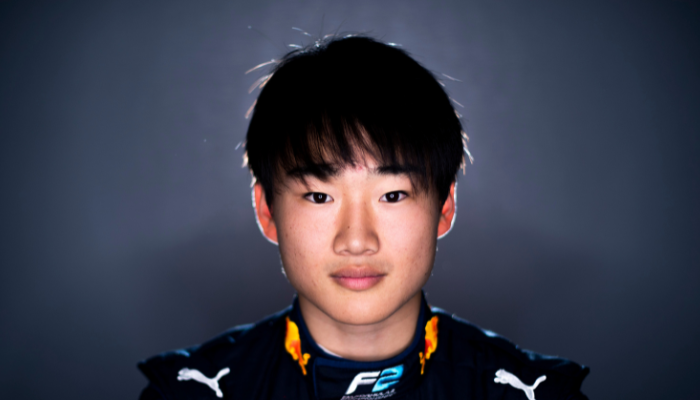The great spectacle at the test of the revolution. By Daniele Sparisci.

One hundred nine million people watched live the last Grand Prix of 2021 in Abu Dhabi, a thriller championship finale with the World Championship won by Max Verstappen in the final meters, amid the controversy and protests of Mercedes and Lewis Hamilton. Will it ever be possible to relive such a great emotion? Will we review such an uncertain and intense battle, on and off the track? And will Ferrari be the protagonist again after years of mediocrity? These are questions that fuel the wait for a new chapter of the fastest sport in the world, in constant evolution to try to attract an increasingly "generalist" audience and not just those nostalgic for a past that will never return. The wonderful follies of Gilles Villeneuve, the magics of Ayrton Senna, the heroism of Niki Lauda after the burning of the Nurburgring, the immeasurable hunger of Michael Schumacher remain unforgettable moments but, sticking to the past remembering it as the best of all possible worlds, is likely to lead off-road. The present is often without memory, especially for the younger generations who have grown up feeding on quick clips, even faster than a thousand horsepower single-seaters. It won’t be a season like any other the one that started on March 20 at the Sakhir track in Bahrain. It is the first one with the new rules suggested by Liberty Media, the American group of telecommunications magnate John Malone who, in 2016, acquired Formula 1 from Bernie Ecclestone. The change took years, the new cycle draws heavily on the principles of the US disciplines, from NBA to baseball. Financial balance to allow the "underdogs", the surprises, to emerge against the odds, with the hope that it will translate into balance on the track: no longer just Hamilton against Verstappen, the dream is a duel with three-four challengers. The winner is the one who spends better, not more, this is, in a nutshell, the basic philosophy that guided the reform. The annual budget has been set at 145 million (before the top teams had come to spend even half a billion), many items such as the salaries of drivers and top managers and engines are excluded. But, in a world of sharp brains used to moving between the folds of the sporting code, it will be interesting to see if the limits won’t be circumvented. Even the technical ones: the return of the "ground effect", invented in the 1970s by Colin Chapman, the genius of Lotus who caught Enzo Ferrari off guard, will be under scrutiny. Will we really witness a rain of overtakings, of wheel-to-wheel chases? From the simulations it seems not, but many times the computers have been proven wrong, starting from 2021 in which Mercedes should have easily won. With the new city circuits adding even more unpredictability, after the roulette in Jeddah, Saudi Arabia, now it's up to Miami, a spectacular and very fast track. Ferrari is forced to redeem itself after endless dry periods (the last drivers' title in 2007 with Kimi Raikkonen and the last constructors' title the following year, then nothing); it had plenty of time to prepare the redemption car, celebratory of 75 years (F1-75), sacrificing a couple of championships, this time the excuses are zero. Hamilton is aiming for eight World Championships to become the most successful in history; it will be a generational confrontation that will see him engaged against a legion of terrible kids, starting with the new teammate George Russell. No, this is not the usual season.
Ferrari

From 2014 to today it has changed two presidents and three managers of Sports Management, from 2019 the team has been in the hands of Mattia Binotto, who joined the company very young, as an intern. The Emilian engineer born in Switzerland has to cancel horrible seasons, such as 2020, the worst of the last forty years, still alive in the minds of the fans. In Maranello tens of millions of euros have been invested to update the technologies: the new simulator has come into operation, new calculation systems have been introduced to improve the technical developments during the current season, which have always been the sore point. Thirty technicians from other teams were hired, it was decided to build everything around a young couple of drivers.

And, for the new single-seater F1-75, help was also requested from a great man of the past, Rory Byrne, protagonist in the golden age of Jean Todt and Michael Schumacher: he gave a hand to the head of aerodynamics, Enrico Cardile. Speaking of Schumi, this year his son Mick has become Ferrari's official reserve, he will drive in case Charles Leclerc or Carlos Sainz are unavailable.
The importance of the new rules, why everything has changed. By Piergiuseppe Donadoni.

What is the ground effect
In 2022, Formula 1 is experiencing one of the most important regulatory changes in its history. With the main objective of improving the show, the single-seaters have undergone a profound transformation on an aesthetic level, thanks to completely revised aerodynamics. The new basic shape of the cars has been studied for months in the wind tunnel and with simulation programs, such as those of fluid dynamics (CFD), to minimize the loss of aerodynamic load when in the wake. Translated: for those chasing from behind, approaching the driver in front to try to overtake should be easier than with 2021 cars which, through a series of fins and appendages created harmful air turbulence such as to ruin the tires. The improvement that the Federation has evaluated is estimated at around 40%. The 2022 single-seaters are “ground effect”, because the new regulations have totally changed the way in which cars go to generate the level of grip on the ground. What counts more is the bottom of the car - which is no longer flat but can count on two long "converging-diverging" tunnels that lead into an enlarged diffuser - and the ailerons count less. This will significantly increase the efficiency of the cars with average increases in top speeds estimated at around 4% in the pre-season tests.

The new cars will be faster on the straight, maintaining the performance of the previous generation in the fast corners, but will be more in difficulty in the mixed and slow sections, also due to a heavier weight (795 kg, including the driver).

Aerodynamics
The cars are completely breaking from what we were used to seeing in recent seasons. 2022 is a fresh start, with old aerodynamic concepts and prior knowledge still very useful, but teams will need to use and apply this know-how quite differently. To generate a much less turbulent wake, the new regulations have simplified all the macro areas of the car, eliminating most of the aerodynamic devices that were useful for the teams to deflect the turbulence generated by the front wheels towards the outside (in English 'outwash'). The front wing has a maximum of four elements - at least three of them must be connected to certainly more bulky noses - and a simplified end plate.

Once the fundamental flaps (bargeboard) placed at the beginning of the bottom have been deleted, the entrance to the side bellies will become an area of fundamental importance on the new generation of cars, with the aim of better managing the turbulence generated by the rolling of the front wheels. The new single-seaters are very close to the asphalt and have a set up slightly inclined towards the ground, to try to maximize the ground effect. If initially we will be able to observe an important variety of technical solutions between the various teams, as the months go by and the developments will have been brought to the track they will in any case converge.
Overtakings
One of the main objectives of the new technical regulations concerns the possibility of increasing overtakings. However, there is still no certainty about it. Many believe that the 2022 cars will not facilitate them too much in those points where it was already difficult to pass, but will create new overtaking points and, therefore, new opportunities in other areas. On many tracks, in previous years, the only chance to overtake was to use the DRS (Drag Reduction System) mobile wing. And, sometimes, even this device wasn't enough. The thought of being able to follow a car more closely when cornering turns out to be a lot of fun for the drivers and should make their driving even more challenging. In this regard, even if the presence of the DRS may no longer seem so necessary, the particular system will be used also on 2022 cars. Only if the new technical regulation really works, then it would be highly likely that it will be subsequently eliminated.
The big tires
It is a total revolution and, in some respects, an historical turning point. After decades of tires with a diameter of 13 inches, in 2022 the 18-inch "big tires" were introduced which, thanks to their reduced sidewalls, will have less impact on the aerodynamics of the single-seaters. A change that also looks to the automotive industry: it will allow for greater technology transfer between the world of racing and road cars. However, there will also be a return to the "past". This is the case of wheel covers which, after the debut in the 2007 season and the subsequent ban in 2010, are back in vogue on 2022 cars to make their aerodynamics more efficient. As in the previous season, Pirelli has designed a range of five compounds. We will go from the hardest compound, the C1, to the softer C5, passing through the intermediate called C2, C3 and C4. Three of these compounds will be used on each race weekend, to be chosen by Pirelli, just like last season. The braking systems will also change, many of them produced by the Italian company Brembo: they are larger in size but have less ventilation than the 2021 specifications, due to the imposition of the regulation of holes with a minimum diameter of 3 mm compared to 2.5 mm in the past season.

1000 horsepower hybrid engines, how they work. By Piergiuseppe Donadoni.
The power of electricity
Since 2014, the concept of the engine has been replaced by that of the power unit. These are engines made up of six macro-blocks where the most important components are the “traditional” endothermic engine and the electrical part. The latter is composed of a battery and two motor generators, called MGU-K and MGU-H. The first, an evolution of the KERS system (introduced in F1 in 2009), acts as a generator under braking and as an engine during acceleration, contributing to the increase in the drive torque available to the crankshaft. The second, on the other hand, uses the kinetic energy of excess exhaust gases that are not necessary for supercharging. As for the endothermic part, the current F1 cars are equipped with 1600 cc supercharged (turbo) petrol engines of over 800 Hp which, coupled to the 163 Hp of the electrical part, bring the hybrid units very close to 1000 Hp, with a conversion efficiency that goes beyond 50%. It means more power is being produced than is being wasted. Mercedes is the engine producer who believed most in the transfer of information from the track to the road, thanks to the development of an electric turbocharger (MGU-H) for the Mercedes vehicles of the AMG high-performance division.

Gasoline with bioethanol obtained from wastes
The sustainability goal, Formula 1 also wants to make its contribution, embracing even more alternative fuels. The 2022 engines run on the new E10 fuel, which increases the bioethanol content to 10%, from a maximum of 5.75% in 2021. Bioethanol is nothing more than ethanol obtained from biomass and from the biodegradable part of wastes. It can be of the first or second generation based on the raw materials used. Ferrari will use the second type, thanks to Raizen, a Shell joint venture; it is a product obtained from non-food biomasses that generates 86% less CO2 emissions than fossil fuels. However, as often happens when it comes to ecological fuels, the problem is the chemical energy per unit of volume that is released during combustion, which is much less than traditional fuels. This change caused a big headache for all the engineers. The adaptation of the turbo V6, together with the work of the fuel suppliers, made it possible to contain the loss of horsepower to a very low and acceptable value. As a matter of cost and to give the engineers time to invest in the new power units, the engines will be frozen for the next three seasons. Only for problems of reliability, safety, power supply and installation in the car or for serious shortcomings in terms of performance, the Federation will allow changes to be made to the unit, in the name of a more equitable balance of performances.
The turning point in 2026
Also in the near future, Formula 1 will continue to support hybrid power units with the 1,600cc V6 coupled to an even more decisive electric part than now. The next generation of engines, which will debut starting in the 2026 season, will, however, do without the MGU-H motor generator (for cost reasons) but will see a significant increase in the power supplied by the electrical part. In fact, it will go from the current 163 Hp (120 kW) to 469 Hp (350 kW). A useful choice to entice the entry of new manufacturers, such as the Volkswagen group which has shown a lot of interest with the Porsche and Audi brands. We will then continue to work in this direction, F1 focuses heavily on eliminating polluting emissions, arriving at the use of 100% sustainable fuels.
Videos



Comments
Authorize to comment